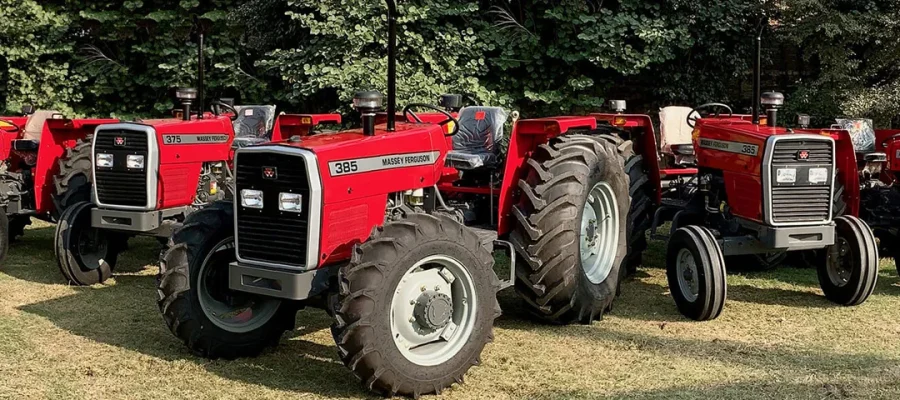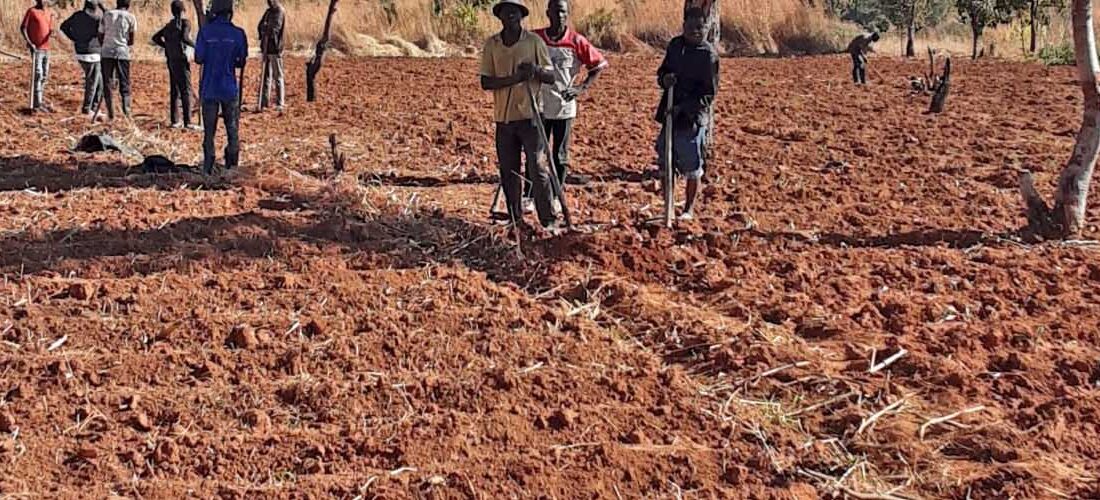
- May 26, 2025
- By: MF Tractors Botswana
- in: Agricultural Machinery, Agriculture Farming, Farm Equipment, Massey Ferguson Tractors

The majority of people in Botswana rely on rain-fed agriculture as their main source of income. Low crop yields of less than one ton per hectare for key staple cereals persist in areas with harsh weather, restricted access to surface water, and low soil fertility. Despite these difficulties, Botswana has to come up with sustainable, inventive methods of producing enough food (such as using agricultural machinery) to feed its ever-increasing population from the dwindling amount of cultivable land without compromising the environment. The low agricultural yields in Botswana are the result of a number of factors, including climate limits, monoculture, and unhealthy soil. Botswana’s semiarid climate places severe constraints on rain-fed farming due to low soil fertility, insufficient fertilizer usage, and periodic droughts. Because agriculture is already among the most susceptible industries to the effects of climate change, these limitations will only worsen. To make matters even more difficult, Botswana’s shoddy social and economic infrastructure only serves to exacerbate these constraints.
Summer rains in Botswana occur during one distinct season, from November to March, and the country has a climate that varies from semi-arid to desert. As a result, this rhythm governs the prime time for cultivating most crops. Rain-fed agriculture is the primary source of food, jobs, and income for the vast majority of rural populations in Botswana. Because of the low average yearly rainfall, water is the primary issue restricting crop yields. Botswana imports the vast majority of its food grains from its neighbors because of its inability to meet domestic demand.
We may anticipate that climate change would amplify the already high degree of rainfall unpredictability in semi-arid regions. Because of this, Botswana is more likely to experience droughts and floods than other countries. Due to the limited rainfall and deep, gritty sand, the southwest regions of the nation are known as sandveld. These sandy soils are notoriously poor water reservoirs due to their low nutrient and organic matter content. The most significant constraint in dryland agricultural production is the quantity of accessible soil moisture. The reproductive phase of plant growth is more sensitive to moisture stress, making it more of a threat to plants than it is during the vegetative phases. So, the time of year when a crop is under moisture stress might be more important than seasonal deficiencies in terms of grain output. The application of fertilizer requires sufficient soil moisture to facilitate nitrogen solubilization and plant absorption.
For the foreseeable future, Botswana will most likely keep importing grains from its neighboring nations. Poor soil fertility and low and erratic rainfall are the main limiting factors to rain-fed crop production, so to avoid this unhealthy trend, farmers need to make use of agricultural machinery like Massey Ferguson tractors for sale, farm implements, etc. Conservation Agriculture (CA) tackles a wide range of soil improvement factors, thus it makes sense to use suitable agricultural machinery and technology. A positive trend is the government’s present focus on Conservation Agriculture. Soil fertility is increased in CA owing to the use of legumes in crop rotation and the practice of leaving crop residue on the soil’s surface, which aids in water retention and conservation.
In order to alleviate the power caused by the drought, the government, through ISPAAD, pays farmers or private tractor owners to till and plant 5 hectares of land. However, recent developments suggest that financial incentives, rather than the desire to increase crop output, are increasingly driving agricultural practices. Private tractor owners are hesitant to provide tillage services to smallholder farmers with farm areas of less than five hectares because they would like to serve a greater amount of land in order to earn more service fees. Therefore, the government has a dilemma in providing enough draught power to smallholder farmers on a timely basis. However, calls for tender may be used to accomplish the supply of draught power, with the successful tractor owners being given a certain number of farms to service. As a follow-up to planting, it is essential that extension agents visit farms to provide advice on crop management. To handle this novel crop, smallholder farmers will have to improvise management strategies with just a basic understanding of the subject at hand. To further prepare for the difficulties ahead, they should invest in quality agricultural machinery. Massey Tractors Botswana is a major supplier of agricultural machineries such as Massey Ferguson tractors, farm implements, and more. Without a doubt, Massey Tractors Botswana is one of the most trustworthy tractor dealers in Botswana. The goal of Massey Tractors Botswana is to lower the barrier to entry for tractor ownership among Botswana’s smallholder farmers. Tractors Botswana is an organization that provides agricultural machinery, including tractors and harvesting tools, to farmers in Botswana at affordable costs.

Post a Comment